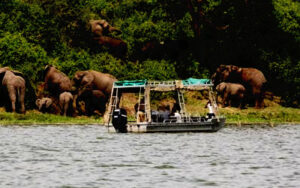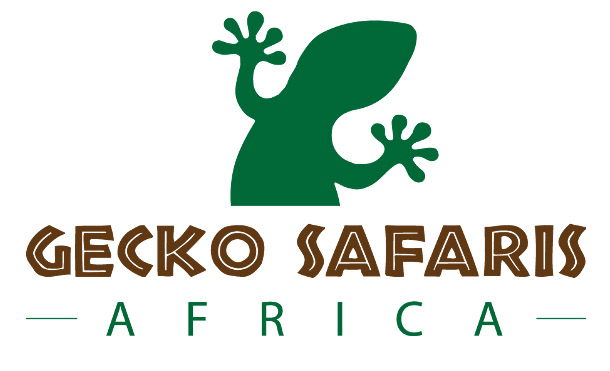What to Bring for a Boat Safari along the Kazinga Channel.
 What to bring for a boat safari. Going on a boat safari on the Kazinga Channel promises to be a wonderful journey, but as with any outdoor activity, preparation is essential for maximizing your experience.
What to bring for a boat safari. Going on a boat safari on the Kazinga Channel promises to be a wonderful journey, but as with any outdoor activity, preparation is essential for maximizing your experience.
Here’s a comprehensive list of items to carry on your boat safari to keep you comfortable, safe, and ready to enjoy every minute.
Camera and binoculars.
A boat safari provides excellent opportunity for wildlife photography. Bring a camera with a strong zoom lens to get close-up images of hippos, birds, elephants, and other wildlife along the shoreline.
Wildlife frequently appears from a distance, and a good set of binoculars will improve your viewing experience, particularly for bird watching.
Look for binoculars with 8x or 10x magnification, as they must be brought while on this boat safari along the Kazinga Channel.
Sun Protection.
Even if you are in the shade on the boat, the sun’s reflection off the sea can be intense. Choose a broad-spectrum sunscreen with an SPF of 30 or higher.
A wide-brimmed hat is crucial for shielding your face and neck from the sun.
Polarized sunglasses reduce glare from the water and allow you to see properly when spotting wildlife.
Lightweight, comfortable clothing.
Wear lightweight, breathable fabrics such as cotton or moisture-wicking textiles because it can get hot during the day, and these light clothes can be beneficial.
To avoid disturbing wildlife with bright colors, choose neutral, earthy colors such as khaki, green, or beige; darker shades may attract insects.
Bring a lightweight jacket or sweater. The morning and evening might be cold, especially while the boat is moving, so these will keep you warm as you cruise.
Waterproof Gear.
A waterproof bag, sometimes known as a dry bag, can protect your gadgets, such as your camera and phone, from potential spills.
As the boat sails, there is a potential for water splashes, so taking this waterproof bag with you will help maintain your devices in good condition as you cruise.
Rain jacket
While the Kazinga Channel area has both a dry and wet season, the weather can be unpredictable.
A lightweight, waterproof jacket is usually recommended, especially during the rainy season (March-May and October-November).
Insect repellent.
The waterway is bordered by lush vegetation and water, providing an ideal habitat for insects, notably mosquitoes.
Bring bug repellent with DEET or Picaridin to protect yourself from bites.
Comfortable footwear.
Because you will be on a boat, waterproof sandals or comfortable slip-ons are excellent ideas.
The boat safari does not require heavy hiking boots, but if you plan to combine the excursion with a nature walk or game drive, lightweight walking shoes may be useful.
Drinking water and snacks.
Staying hydrated is essential, especially in the sun. Bring a reusable water bottle or a small hydration pack. S
Some safaris may give water, but it is always a good idea to bring your own just in case.
However, you may bring a few light snacks, such as almonds or energy bars, to keep you energized throughout the safari, especially if it’s a lengthy one.
Ask your safari provider if food and drinks are included.
Field Guide or Wildlife Book.
If you are a wildlife enthusiast or a birder, bringing a field guide to East African animals and birds might add an educational component to your boat safari.
It’s also useful for identifying the different species you’ll come across.
Notebook and Pen
For the more daring visitor or avid birdwatcher, writing down animal observations and notes about the experience in a little notebook is an excellent method to preserve memories.
With these notes taken, one may always relate and refer back to them, and such memories stay longer.
Personal Medications
If you are prone to motion sickness, bring some medicine, such as Dramamine, to ensure a comfortable experience. However, the water is normally tranquil.
First Aid Kit.
While safari operators will normally have a basic first aid kit, it is advisable to have personal medication, such as pain medications, allergy tablets, or anything else you may require. Remember, you are fully aware of your medical situation and what you may require in the event of an emergency.
Cash for tips or souvenirs.
It is usual to tip your boat captain or guide at the end of the safari if you believe they delivered great service.
Furthermore, there could be local souvenir dealers near the landing area, so having some local currency (Ugandan Shillings) on hand is useful.
Passport, ID, and Park Entrance Permits
If you are traveling from another country, you may be required to carry identification, particularly when entering the park.
Make sure you have your passport or ID and any necessary permission for the national park. All can wait, but these documents are a must-bring while on this safari.
Gecko Safaris Africa will normally manage park entry costs, but it’s a good idea to keep these documents handy.

